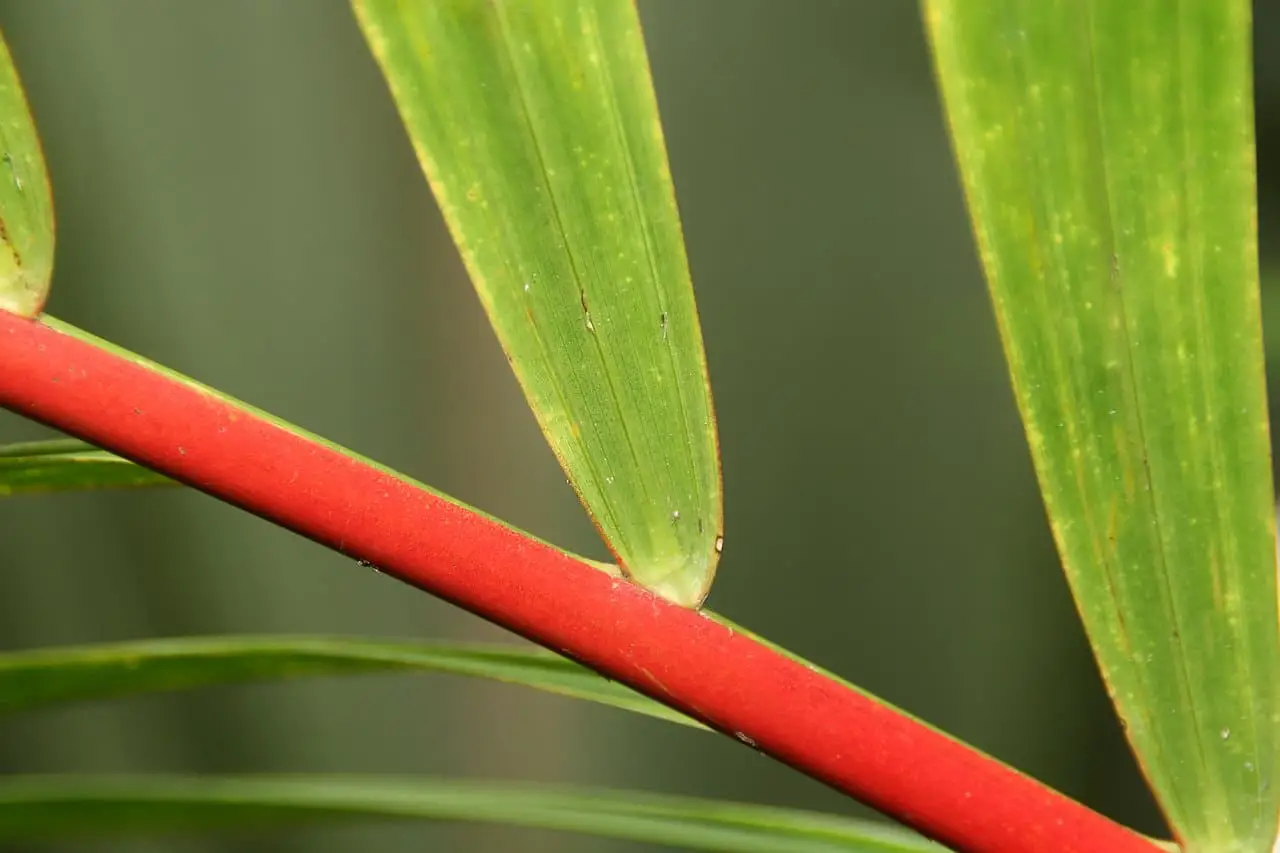
Image – Wikimedia Commons / David J. Stang
When I started my time as a palm tree collector, around 2008, it didn’t take me long to fall in love with a specific species. Unfortunately (or perhaps fortunately for my purse) I could not have it in my area, because in winter, although the temperatures do not drop much, it is cold for her. Surely when you meet her, you will also feel captivated or captivated by her.
And the red palm tree it is simply a work of art. As if someone had taken it from a museum painting. Did we discover it?
Origin and characteristics of the red palm tree

Image – Wikimedia / Moebiusuibeom-en
The scientific name of the red palm tree is Cyrtostachys renda. It is native to Sumatra, where it enjoys a tropical climate throughout the year, with abundant rainfall and a warm sun, but not too intense. It belongs to the Arecaceae family (formerly Palmaceae), and is one of the most appreciated among fans (or rather passionate) of this type of plant. It is widely cultivated for its red stems, petioles and rachis, and its beautiful pinnate leaves.
It can reach a height of 12 meterswith stems of only 10 centimeters in diameter. And its fruits are ovoid, with a size of about 1,5 centimeters, and are bluish-black in color.
What are the care of the Cyrtostachys renda?
The red palm tree is gorgeous, but in cultivation it is quite difficult to maintain. It requires a humid tropical climate, and even if you want to have it indoors in a temperate climate, you will have to take certain measures that we will now explain to you to have some guarantee of success.
Location
- Outdoor: the red palm must be placed in semi-shade when it is young, and gradually adapt it to full sun as it grows. In areas where the sun is very intense (such as in the Mediterranean region), it is better to have it protected from the sun at all times.
- Interior: place your plant in a room where a lot of light enters, but as far as possible from windows and drafts, as well as passageways. For the humidity to be high (and, incidentally, it does not harm the house in any way) you have to put a humidifier near it, or containers with water around the pot. In these containers you can put small aquatic plants, thus beautifying the place even more.
Irrigation
You need frequent wateringsespecially if it is abroad. In tropical climates where it rains frequently, it is planted a lot on the edges of ponds, and near fresh water courses. But beware: it is not an aquatic plant, so it should NOT be overwatered or planted in the middle of the pond, because doing so would not survive.
With this in mind, you should water when you see that the soil is drying out. Avoid going to the extreme that it dries out completely. And if you have it in a pot, during the driest and warmest season you can put a plate under it and fill it up when you see that the plant has absorbed all the water.
Subscriber

Image – Flickr / David Martin
It will appreciate being fertilized throughout the growing season with a specific fertilizer for palm trees. You can also use organic fertilizers such as guano, earthworm humus, or manure of some herbivorous animal.
Other options are homemade fertilizers, such as egg and banana peels, or tea bags.
Pruning
Pruning the red palm tree It should only consist of cutting dry leaves and flowers. This can be done when necessary, using tools that have been previously disinfected.
If it were growing wonderfully and took a lot of stems from the base, you could easily cut them down leaving whatever you want.
Multiplication
The Cyrtostachys renda multiplies by seeds in spring-summer following this step by step:
- The first thing is to put them in a glass of water for 24 hours to check which are viable and which are not. Those that remain floating can be discarded, since most likely they will not germinate.
- Next, fill a transparent plastic bag with a hermetic seal with vermiculite-type substrate previously moistened with water.
- Next, put the seeds in the bag, and bury them a little in the substrate.
- Then close the bag.
- Lastly, place the bag near a heat source that keeps the temperature around 20 degrees Celsius.
If all goes well, they will germinate in 1-2 months. But for them to do so, it is important to check the humidity of the substrate, since if it dries the seeds would not dehydrate and would end up being unviable.

Related article:
Palm tree reproduction: seeds
Rusticity
So that it can develop properly It must be in a frost-free zoneIn fact, the ideal would be that the temperature does not drop below ten degrees. In cooler climates (with winter temperatures close to 0 degrees or -1 degrees), it could be tried to grow it in a greenhouse, but it is difficult.

Image – Wikimedia Commons / David J. Stang
What did you think of the red palm tree? Did you know her?

